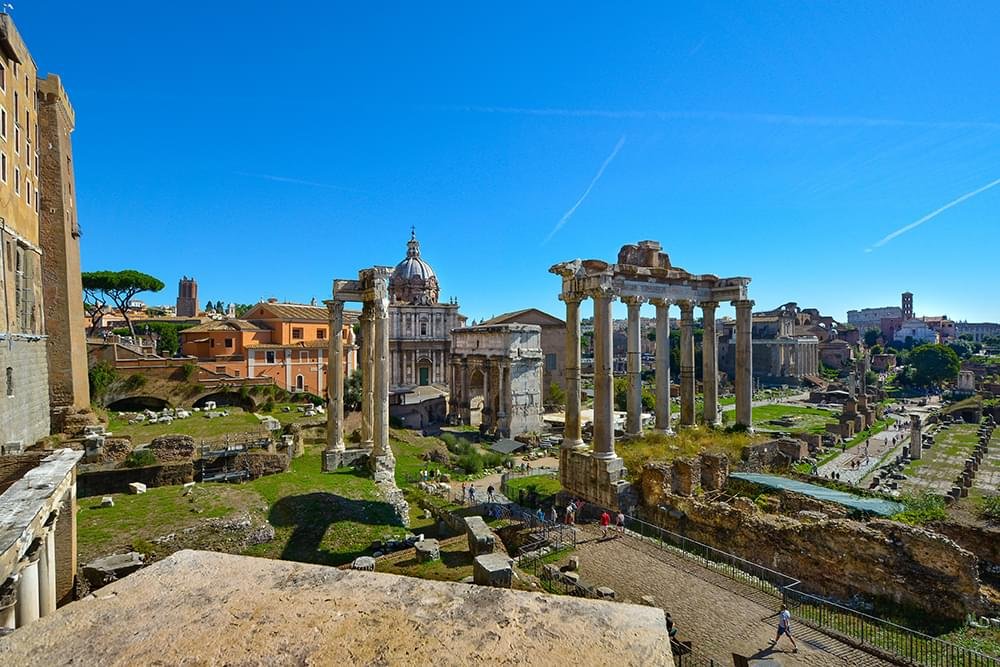
The Roman Forum, or Forum Romanum in Latin, stands as one of the most significant archaeological sites in the world. Located in the heart of Rome, nestled between the Palatine and Capitoline Hills, the Forum was once the epicenter of Roman public life. It was a place of triumphant processions, public speeches, criminal trials, and commercial affairs. Today, it offers a window into the grandeur of the Roman Empire and provides insight into the civic and religious life of ancient Rome.
The Roman Forum's history stretches back to the 7th century BCE, although it possibly began as a marketplace around 800 BCE. Initially, the area was a marshy lake, which the Romans drained by constructing the Cloaca Maxima, one of the world's earliest sewage systems. As Rome's population expanded, so did the Forum, evolving from a chaotic marketplace into the focal point of Roman administrative and public life.
Throughout its history, the Forum was the scene of important events in ancient Rome, including the funeral of Julius Caesar and the final battle between Titus Labienus and the forces loyal to Caesar. The Forum also saw speeches by great orators like Cicero and housed important religious temples, making it both a civic and a sacred site.
The layout of the Roman Forum was unplanned and grew organically with the expansion of the Roman Republic and later the Empire. The Forum comprises various buildings, temples, and arches, each representing a different era of Roman architecture.
One of the oldest structures in the Forum, the Temple of Saturn, was rebuilt several times due to fires and other disasters. The temple served as the treasury of the Roman Empire and held the reserves of gold and silver. Another significant temple, the Temple of Vesta, housed the sacred fire of Rome, which was never allowed to go out.
The basilicas were multifunctional buildings used for business, legal proceedings, and other public affairs. The most famous basilica in the Forum was the Basilica Julia, commissioned by Julius Caesar and completed by Augustus, which served as a venue for civil law courts.
The arches, such as the Arch of Titus, commemorated victories in battle and were adorned with reliefs depicting the victories. The arches not only served a commemorative purpose but also demonstrated the might and wealth of the empire.
During the height of the Roman Empire, the Forum was bustling with activity. Citizens of Rome gathered here not just for official business but for day-to-day activities. Markets, political activities, religious ceremonies, and trials filled the Forum with a diverse cross-section of Roman society.
However, with the fall of the Roman Empire, the Forum fell into disuse and was eventually buried under debris. It wasn't until the Renaissance that interest in the Forum rekindled, leading to extensive excavations that continue to this day.
Excavations of the Roman Forum have provided valuable insights into Roman society. Artifacts, ranging from pottery and coins to tools and jewelry, have been unearthed, offering clues about daily life in ancient Rome. The Forum has also revealed much about Roman construction techniques, including the use of concrete and advanced engineering practices.
Today, the Roman Forum is a major tourist attraction, drawing millions of visitors each year. The site is part of the larger historical landscape of Rome that includes the Colosseum and Palatine Hill. It remains a testament to Rome's architectural and engineering prowess and its ability to influence the cultural and political landscape of Europe and the world.
The Roman Forum is not just a collection of ruins; it is a mosaic of history, each stone and column telling a story of power, religion, and public life. Exploring the Forum is akin to walking through the pages of history, each step revealing more about the complexities of ancient Roman civilization. As ongoing excavations peel back layers of history, the Forum continues to be a source of fascination and discovery, a timeless link to Rome's majestic past.

More Details



